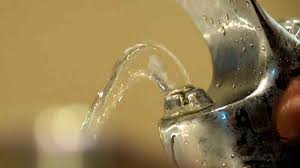In the second article in a series in the Toronto Star on November 5, 2019, the article entitled, “The lead that may lurk in the pipes at your school” continues to reveal grave concerns about lead in our drinking water – especially in our schools. The article starts off by stating that “2,400 Ontario schools and daycares exceeded the current federal guideline for lead in drinking water in the past two years”. This figure represents a 275% increase from two years ago, and reflects the fact that there is more frequent testing being done and more stringent federal limits of 5 parts per billion (pp) – down from the previous 10 ppb.
Read our full investigation here which includes a searchable database for lead levels in water at schools and daycares across the province #TaintedH2O : https://t.co/OhfT1fwcdr
— Kelly Skjerven (@KellySkjerven) November 5, 2019
Apparently, twenty-three schools and daycares across Ontario reported samples higher than 1,000 parts per billion – dramatically higher than the federal safety limit and a level that experts say can impact blood lead levels in a child immediately and risk damaging cognitive development. While this data has been available on a provincial website, there were no warnings given or flags raised to students, parents, and teachers impacted by these high lead levels. Surely, children deserve to be safe in their place of learning and this startling discovery calls into question whether Ontario children are, indeed, safe in their schools.
Never-before-published results of a 2017 daycare study by the province reveal more than 10 per cent of 150 daycares exceeded the previous Health Canada guideline of 10 parts per billion (ppb). https://t.co/mRUDTrdn2D
— Toronto Star (@TorontoStar) November 5, 2019
One school cited in the article is White Oaks Secondary School in Oakville, which had 22 water samples exceed the 5 ppb limit last year on one campus and 26 water samples with exceedances on another campus, with one sample showing 140 ppb – a level that is 28 times the federal safety guideline.
When a child uses the water fountain at school, they shouldn't have to worry about lead contamination.
I hope the government takes these new reports seriously and changes its tune on public health funding and clean water protection. #onpoli https://t.co/WtsExt0MkH
— Mike Schreiner (@MikeSchreiner) November 5, 2019
It is important to note that the $16-billion of disrepair noted in Ontario’s publicly funded schools does not reflect any work needed to eliminate lead from drinking water in schools. Fix Our Schools has been calling for a Standard of Good Repair for Ontario’s schools for years and has asked the provincial government repeatedly to develop and execute a Standard of Good Repair for our schools that would include not only standards for lead in drinking water, but also standards for things such as air quality, asbestos and classroom temperatures – none of which are currently reflected in the $16-billion of disrepair noted in Ontario’s schools. Given that the effects of lead in a human body are irreversible, lead in our children’s drinking water at schools is an issue that must be taken seriously.
The Ontario Ministry of Education appears to be pushing blame and responsibility down to school boards for resolving the issue of lead in drinking water, saying that “while it allocates funding to school boards, those boards are responsible for deciding how the funds are spent, as they are in the best position to determine their renewal priorities and local needs”. However, school boards rely exclusively on provincial funding to be able to maintain and repair its buildings and this provincial funding was a mere fraction of what it ought to have been for almost two decades. This gross and chronic underfunding by our provincial governments have left school boards in the unenviable position of having to make impossible decisions. How would you decide whether your first priority is to repair a leaking roof or to replace lead pipes, knowing you don’t have the money to do both? Again, we must emphasize that the $16-billion of disrepair logged in Ontario’s publicly funded schools does not reflect repairs needed to replace lead fixtures, pipes, and solder.
